Do you have a question about the Craftsman 113.241680 and is the answer not in the manual?
Essential safety guidelines for operating any power tool, covering tool knowledge, grounding, guards, work area, apparel, and safe practices.
Critical safety measures specific to table saws, including stability, proper location, kickback avoidance, and personal protection.
Prominent warnings regarding tool use, potential hazards, and importance of following manual instructions.
Details on motor power, electrical needs, proper grounding, and outlet requirements for safe operation.
List of essential tools required for assembling the table saw and its components.
Step-by-step guide for assembling the saw's leg structure using provided hardware.
Guide for installing the elevation and tilt handwheels onto their respective shafts.
Procedure for checking the table insert's fit and instructions for removal and replacement.
Steps to ensure the sawblade is parallel to the miter gauge groove, correcting any 'heeling'.
Procedure for checking and adjusting the blade's tilt angle for 90° squareness and 45° bevel cuts.
Instructions for adjusting the stop screws to set precise 90° and 45° blade tilt positions.
Guide for securely mounting the motor, including checking rotation direction and electrical connections.
Step-by-step instructions for installing the flexible shaft assembly onto the motor and arbor.
Instructions for attaching the table extensions to the saw, including hardware and assembly steps.
Procedure for installing the front and rear rip fence guide bars onto the saw table.
Steps to ensure the rip fence slides smoothly and remains parallel to the sawblade and miter grooves.
How to adjust the rip scale indicator to accurately show the fence position relative to the blade.
Procedure for aligning the spreader to be parallel with the sawblade and centered in the cut kerf.
Instructions for adjusting the miter gauge head for accurate angle cuts.
Guidance on correctly connecting the motor power cord to the outlet.
Explanation of the saw's on-off switch, its locking feature, and safe operating procedures.
Overview of essential saw controls like elevation/tilt handwheels, rip fence, miter gauge, blade guard, and table insert.
Detailed steps for safely removing and installing the sawblade, including tightening the arbor nut.
Guide on using the Exact-I-Cut disc for precise cutting reference on the saw table.
Guidance on using essential work helpers like push sticks and blocks, along with critical safety for cutting operations.
Instructions for performing crosscuts, miter cuts, and bevel crosscuts using the miter gauge.
Procedures for ripping, bevel ripping, ploughing, molding, resawing, and rabbeting using the rip fence.
Techniques for cutting panels, narrow strips, dadoing, and molding operations.
How to use featherboards to maintain workpiece contact and prevent kickbacks during cuts.
Guidelines for maintaining the motor, cleaning the saw cabinet, and keeping cutting tools sharp.
A list of recommended optional accessories available for purchase to enhance saw functionality.
Solutions for common operational problems such as vibration, binding, inaccurate cuts, and control issues.
Diagnosing and resolving motor-related problems including excessive noise, low power, and overheating.
Information on how to order replacement parts, including necessary details to provide to Sears.
Essential safety guidelines for operating any power tool, covering tool knowledge, grounding, guards, work area, apparel, and safe practices.
Critical safety measures specific to table saws, including stability, proper location, kickback avoidance, and personal protection.
Prominent warnings regarding tool use, potential hazards, and importance of following manual instructions.
Details on motor power, electrical needs, proper grounding, and outlet requirements for safe operation.
List of essential tools required for assembling the table saw and its components.
Step-by-step guide for assembling the saw's leg structure using provided hardware.
Guide for installing the elevation and tilt handwheels onto their respective shafts.
Procedure for checking the table insert's fit and instructions for removal and replacement.
Steps to ensure the sawblade is parallel to the miter gauge groove, correcting any 'heeling'.
Procedure for checking and adjusting the blade's tilt angle for 90° squareness and 45° bevel cuts.
Instructions for adjusting the stop screws to set precise 90° and 45° blade tilt positions.
Guide for securely mounting the motor, including checking rotation direction and electrical connections.
Step-by-step instructions for installing the flexible shaft assembly onto the motor and arbor.
Instructions for attaching the table extensions to the saw, including hardware and assembly steps.
Procedure for installing the front and rear rip fence guide bars onto the saw table.
Steps to ensure the rip fence slides smoothly and remains parallel to the sawblade and miter grooves.
How to adjust the rip scale indicator to accurately show the fence position relative to the blade.
Procedure for aligning the spreader to be parallel with the sawblade and centered in the cut kerf.
Instructions for adjusting the miter gauge head for accurate angle cuts.
Guidance on correctly connecting the motor power cord to the outlet.
Explanation of the saw's on-off switch, its locking feature, and safe operating procedures.
Overview of essential saw controls like elevation/tilt handwheels, rip fence, miter gauge, blade guard, and table insert.
Detailed steps for safely removing and installing the sawblade, including tightening the arbor nut.
Guide on using the Exact-I-Cut disc for precise cutting reference on the saw table.
Guidance on using essential work helpers like push sticks and blocks, along with critical safety for cutting operations.
Instructions for performing crosscuts, miter cuts, and bevel crosscuts using the miter gauge.
Procedures for ripping, bevel ripping, ploughing, molding, resawing, and rabbeting using the rip fence.
Techniques for cutting panels, narrow strips, dadoing, and molding operations.
How to use featherboards to maintain workpiece contact and prevent kickbacks during cuts.
Guidelines for maintaining the motor, cleaning the saw cabinet, and keeping cutting tools sharp.
A list of recommended optional accessories available for purchase to enhance saw functionality.
Solutions for common operational problems such as vibration, binding, inaccurate cuts, and control issues.
Diagnosing and resolving motor-related problems including excessive noise, low power, and overheating.
Information on how to order replacement parts, including necessary details to provide to Sears.
| Model Number | 113.241680 |
|---|---|
| Type | Table Saw |
| Blade Diameter | 10 inches |
| Arbor Size | 5/8 inch |
| Voltage | 120V |
| No Load Speed | 3450 RPM |
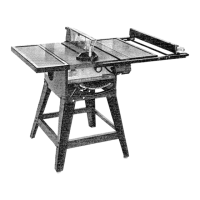
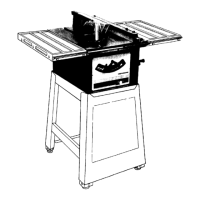
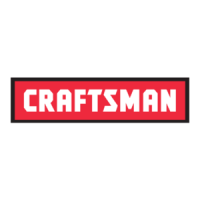

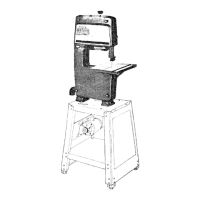
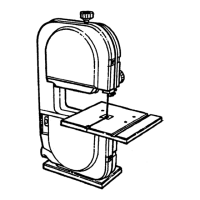
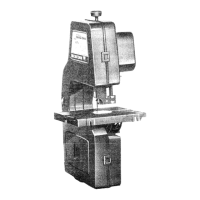
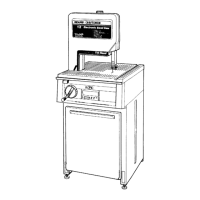
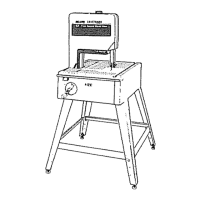
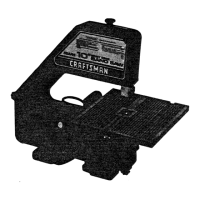
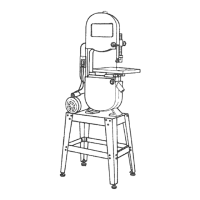

